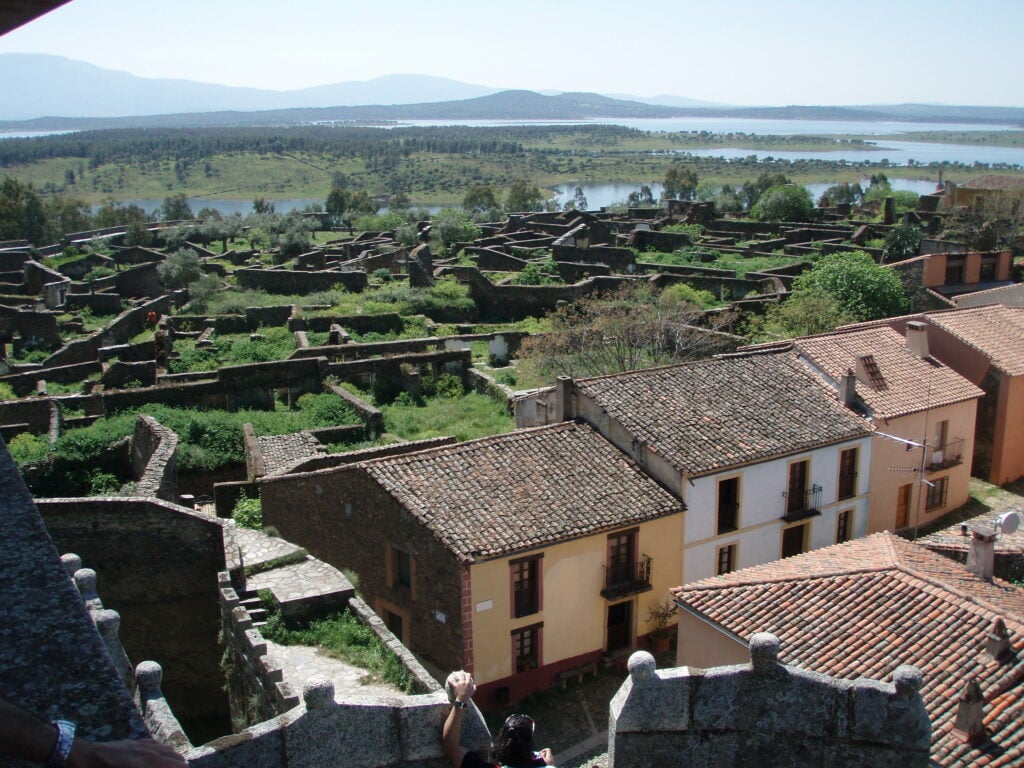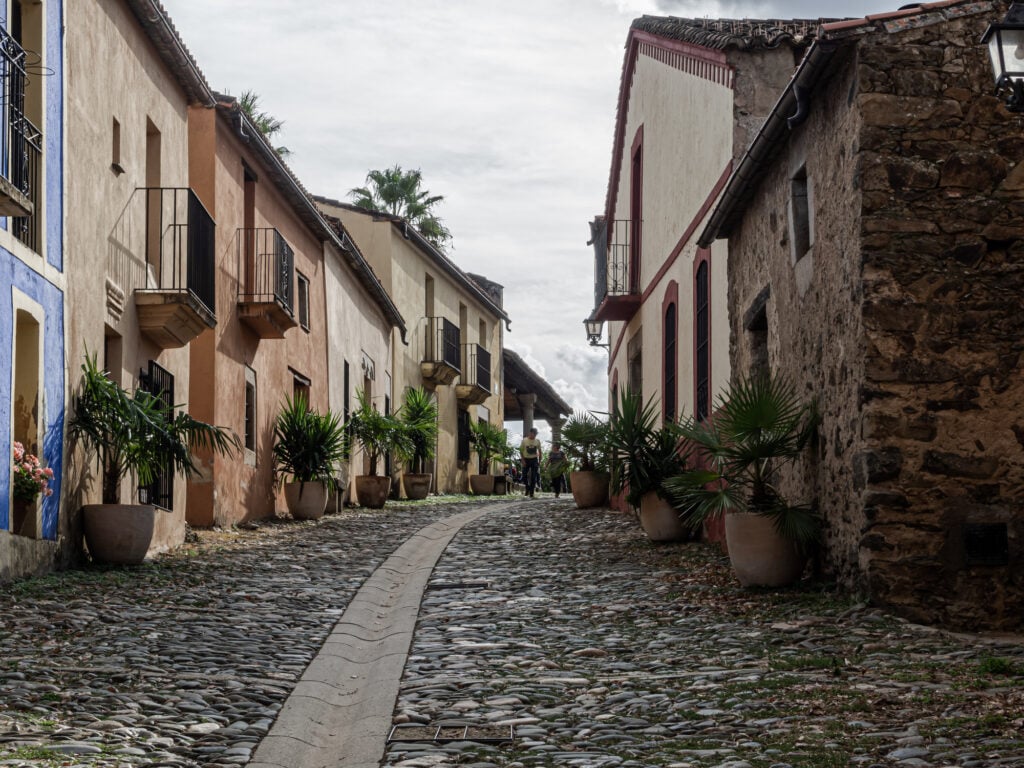The picturesque Spanish village of Granadilla dates back to Muslim settlers in the 9th century, with a medieval castle towering over ancient walls, colorful homes and cobbled streets.
Yet since the 1960s, curious tourists have provided Granadilla’s only footfall. Despite resistance, residents were evicted after Francisco Franco’s dictatorship ordered the construction of a new reservoir that put the village in the floodplain.
Only the flood never came.

Situated at the top of a hill in the northern Extremadura region, the village had originally been called Granada, however its name was changed to avoid confusion after the Catholic Monarchs conquered the famous southern city in the late 15th century. In Spanish, Granadilla translates to “little Granada”.
Like in Granada, ancient Islamic architecture remains in Grandadilla. It is, in fact, one of the best-preserved Spanish villages, with fortress structures dating back over a millennium. While it may not have ever reached city status, Granadilla was one of the major towns in its area, and had a thriving local community in its own right.

That was until the mid-20th century. Proclamations of floods seem almost biblical, but they were indeed what came as a byproduct of an initiative where Spain – geopolitically isolated under Franco’s regime – sought to boost its economy by building a series of dams. The Gabriel y Galán reservoir on the Alagón River was the biggest of these. In 1955, officials ruled that Granadilla was in its floodplain and therefore its residents had to be evicted.
“It was a travesty,” Eugenio Jiménez, president of the Association Sons of Granadilla, told the BBC. “They kicked us out, claiming that the dam would flood the town.”
Read More: Deception Island | What secret is this beautiful Antarctic island hiding?
Between 1959 and 1964, the city’s population was forcibly moved. Numbering over 1,000, many relocated to settlements nearby. “I remember that every time a family left the village, everyone came out to the entrance of the village to say goodbye and cried,” Purificación Jiménez, a former resident, explained. In 1965, the municipality of Granadilla was formally dissolved by Franco’s government.
The water began to rise in 1963, and at one point blocked all but one route to the village, but Granadilla itself never flooded. Still, the government would not let people move back in, reportedly classifying it as government land. While the walls of Granadilla were not breached and access to the town remained, it is worth mentioning the impact the water had on the agricultural Vega Baja land, where many of the village’s residents worked.

“[Flooding] was impossible because the town is higher than the dam,” Eugenio Jiménez continued. “But those were times of dictatorship, and we had no rights. What truly frustrates me is that during democratic times, I’ve been struggling for the recovery of Granadilla with the former children’s association, and no government has listened to us.”
Though no residents have been allowed to back in, thorough restoration works were carried out on the village in the 1980s, preserving its ancient heritage. It is now run as a free, open-air museum. Twice a year – on the Day of the Assumption of Mary in August, and All Saints’ Day in November – the former residents of Granadilla and their descendants come together in the ancient village.





